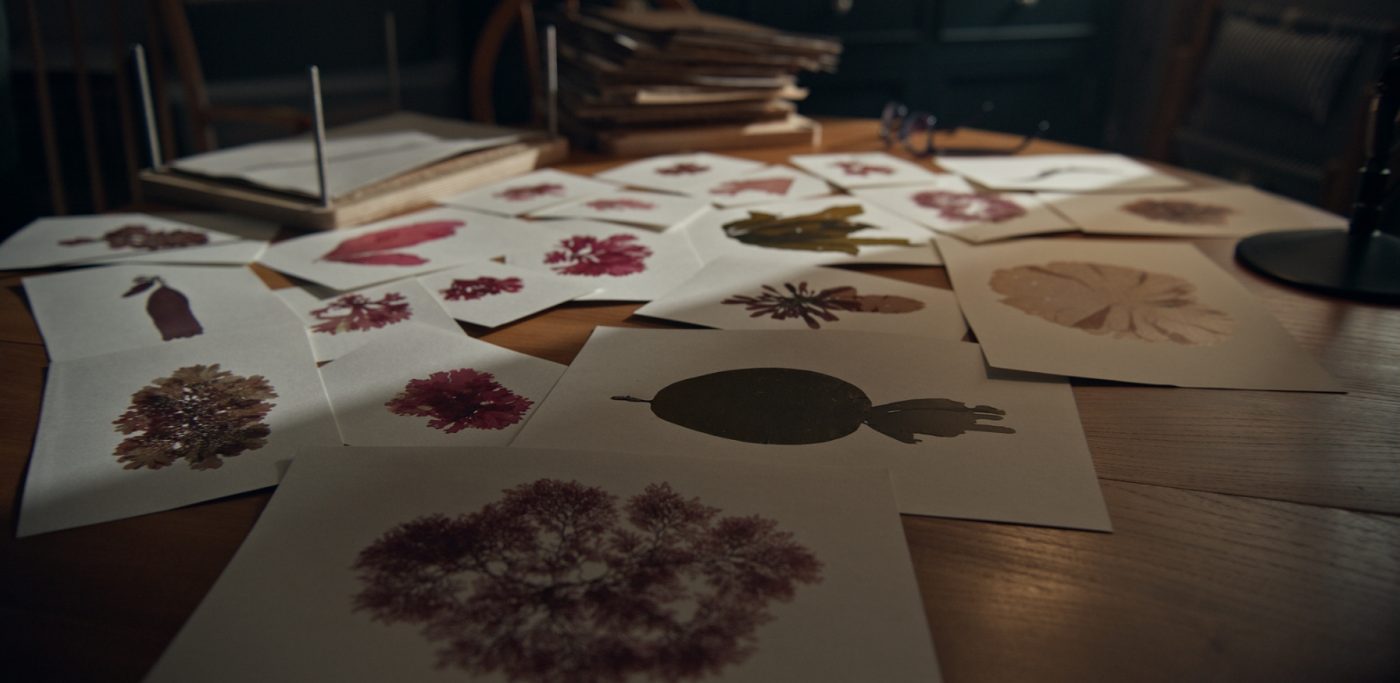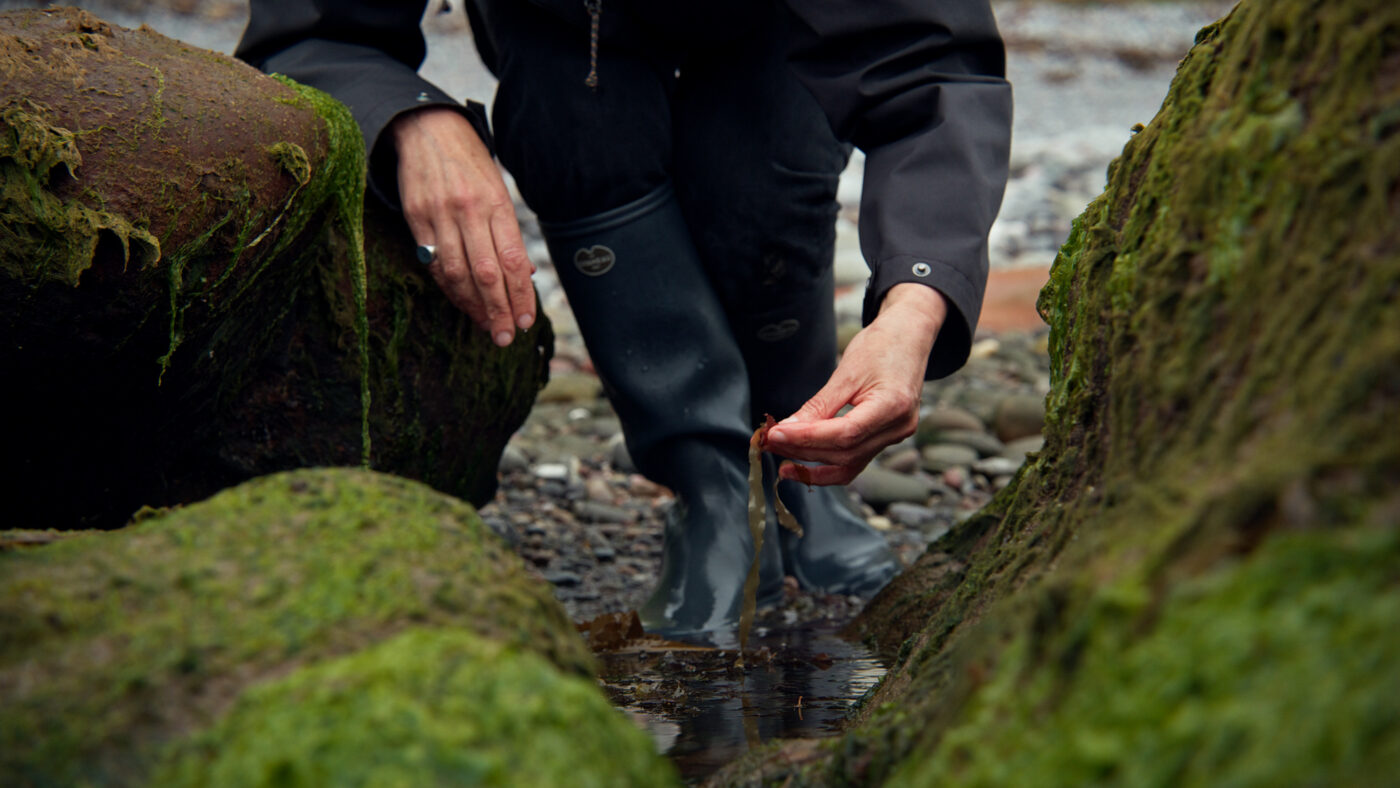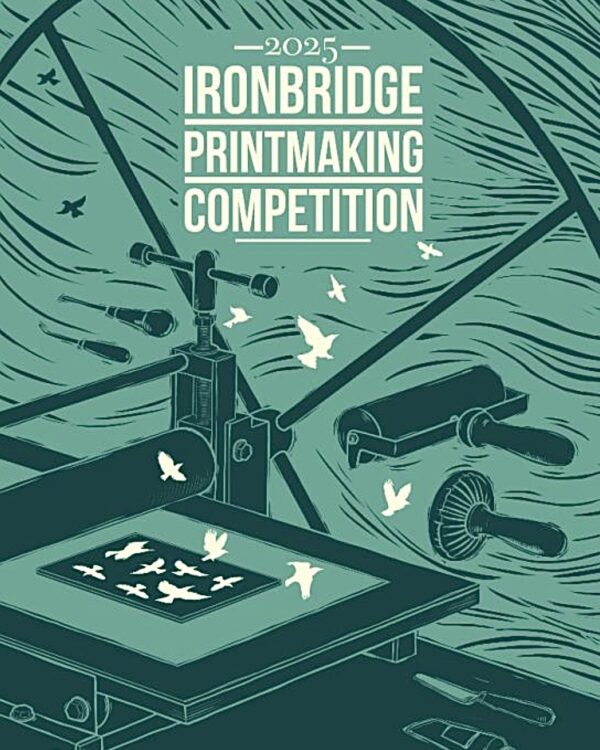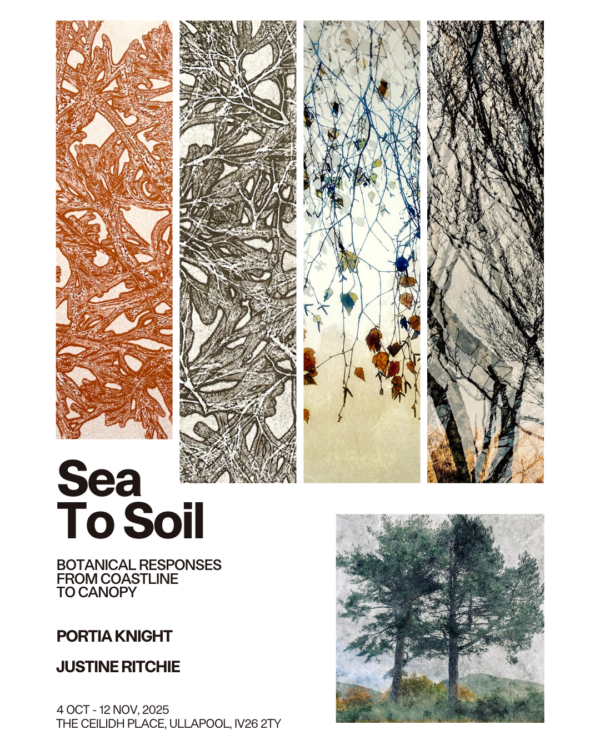Sourcing Seaweed
I forage in shoreline rockpools at low tide, when the floating 'drift' seaweed is easiest to see and examine for selection. I only use drift (or 'cast') seaweed for my seaweed pressing, as there's plenty of it to choose from and it avoids unnecessarily uprooting seaweed from the rocks.
My trusty white bucket is usually with me as it allows me to float the seaweed I find, getting a sense of what it might look like on paper and giving a good indication of shape and colour. I'm selecting for art rather than scientific study, so 'imperfections' offer welcome variety and often interesting textures.











